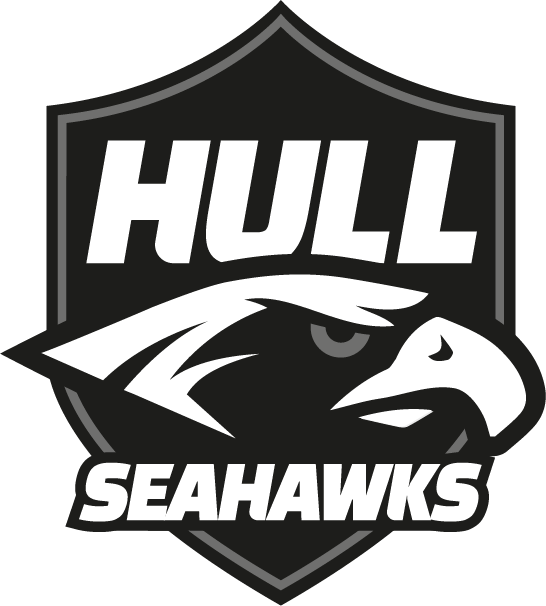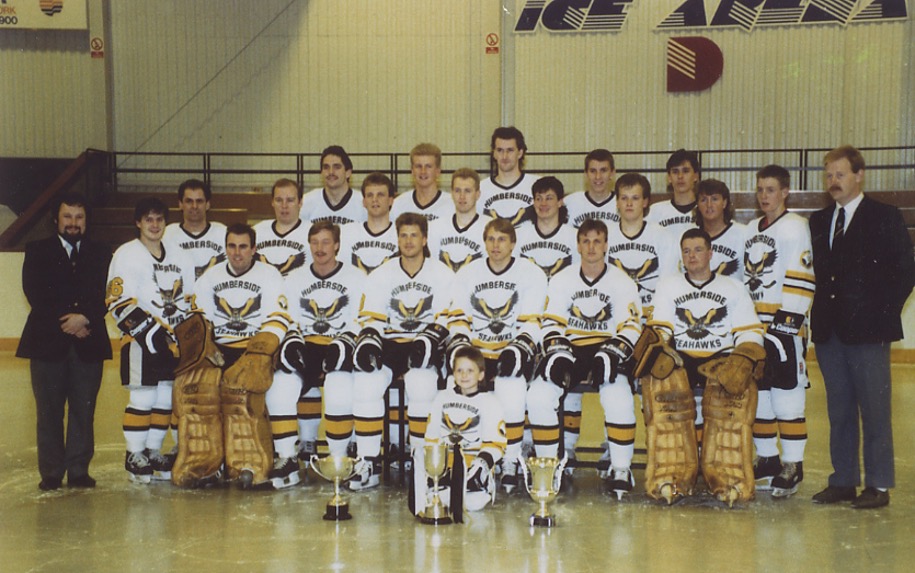
Humberside Seahawks 1988-89 (Photo courtesy of Arthur Foster)
Founded in 1988 by the Humberside County Council, the first iteration of the Seahawks were guided by an astute GM, Adrian Florence, and Canadian player/coach, Dale Lambert. They began their all too brief life in Heineken English League Division 2, where they developed an intense rivalry with Bracknell Bees. Against the backdrop of these fierce contests, Humberside Seahawks became the one of most talked about clubs of the era, winning the Division 2 title and promotion in their inaugural season.
The 1989/90 season proved less fruitful in Division 1, where the Seahawk’s expected success, simply did not materialise. Having regrouped, the 1990/91 campaign saw a return to winning ways. Legends, the Johnson brothers, Ross and Dale Lambert and high scoring Scott Morrison, ripped up the record books on the way to winning the Division 1 title and vital promotion via the play-off group. After just three years of existence, Humberside Seahawks had gained promotion to the Heineken League Premier Division.
The Heineken League Premier Division was no place for shrinking violets with the likes of Whitley Warriors, Durham Wasps, Nottingham Panthers and Cardiff Devils seeking to halt the Seahawks determined dash for glory. In a gruelling but fascinating season, the Seahawks made an early impression with legendary games against reigning champions, Durham Wasps, and runners up, Cardiff Devils. Led by seasoned bench coach, Peter Johnson, the team achieved a credible fourth place and reached the final of the Autumn Cup where they lost 5–7 to Nottingham Panthers. It was a poignant game not just for Seahawk fans but for neutrals too as they watched from the stands at the brand new 10,000 seat Sheffield Arena: the era of stadium ice hockey had begun. Injuries disrupted the latter part of Humberside’s season, signalling the breakup of the record-breaking 1991/92 side.
Leading up to the 1992/93 season, turmoil prevailed as Ross Lambert was replaced as coach by Peter Johnson even before a puck was dropped. ‘Jonka’ inherited a side that had notable individuals such as Dale Lambert, Mike Bishop and his three sons but as a squad, it rarely gelled. Even when the enigmatic Dan Dorion was recruited, still one of the most revered players ever to pull on a Humberside jersey, consistency seemed to elude them. A disappointing finishing position of seventh in the league was at least punctuated by some silverware following a 6–5 victory over the Durham Wasps to win the Castle Eden Cup.
Moving into the end of season playoffs, stuttering form hardly inspired fans confidence in reaching Wembley for the first time. Defying the odds, as games progressed momentum developed. Following gritty performances against the Bees and Whitley Warriors, the Seahawks created history as the first seventh place team in the regular season to reach the finals weekend at Wembley Arena.
Of the many memorable games that defined the Seahawk’s era, the semi-final against Nottingham Panthers has to rank as high as any. On paper, this appeared to be a mismatched contest but in the third period, Humberside unexpectedly led 4–2. With the finishing line in sight, fate dealt a deadly blow. A section of the Plexi-glass broke and the ensuing 25-minute stoppage in play allowed the Panthers to calm their collective nerve.
Leaving their dressing room led by a raging bull in the form of Graham Waghorn, the Panthers blazed away until the game tied at 4–4. Overtime saw Nottingham confirm the formbook predictions, completely dominating play and it appeared only a matter of time before they scored the winning goal. Nevertheless, even with a defence suffering heavy injuries, the Seahawks remained defiant, inspired by the heroics of netminder Frankie Killen. Nottingham forward, Paul Adey, one of the leading players of his day, simply could not find a way to beat the former Durham keeper. Pushing ever further forward, the Panthers turned over the puck to their former hero, Dan Dorion. Alongside him, Kevin McNaught skated towards the Panthers’ zone. Almost every Seahawks’ fan urged Dorion to shoot but instead he laid on a perfect pass to McNaught who beat the Panthers’ netminder and scored the sudden death winner to send the Seahawks into the final.
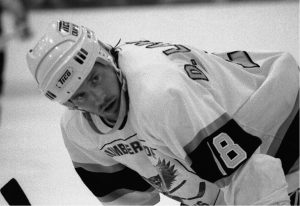
Dale Lambert, player and coach of the Humberside Seahawks, player for Kingston Hawks and later, Hull Thunder. (Photo courtesy of Arthur Foster)
The previous day’s epic struggle told badly on the Seahawks as they faced the formidable Cardiff Devils who had cruised to an easy victory in their semi-final against Murrayfield. A comfortable 7–4 victory over the Seahawks was a sad end to such a loved and respected club. It may have been a brief era but few in the world of UK ice hockey could have been so impressive. At the final whistle, Humberside fans sang forlornly to their players and said farewell to this truly great club.
- 1988/89 English League 2, English Cup and Promotion Playoff Champions
- 1989/90 Autumn Trophy winners
- 1990/91 Heineken Division One Champions, Norwich Union Cup Semi-finalists and Promotion Playoff Champions
- 1991/92 Autumn Cup Finalist
- 1992/93 End of Season Playoff Finalists
- Colours: black/white/yellow and black/white/silver-grey

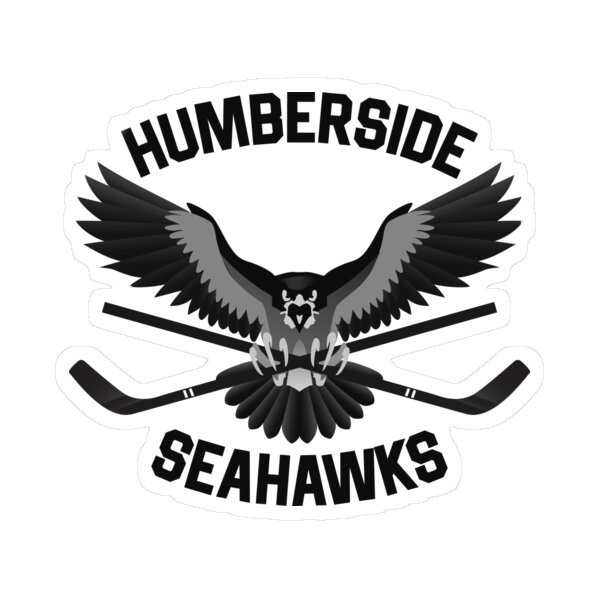
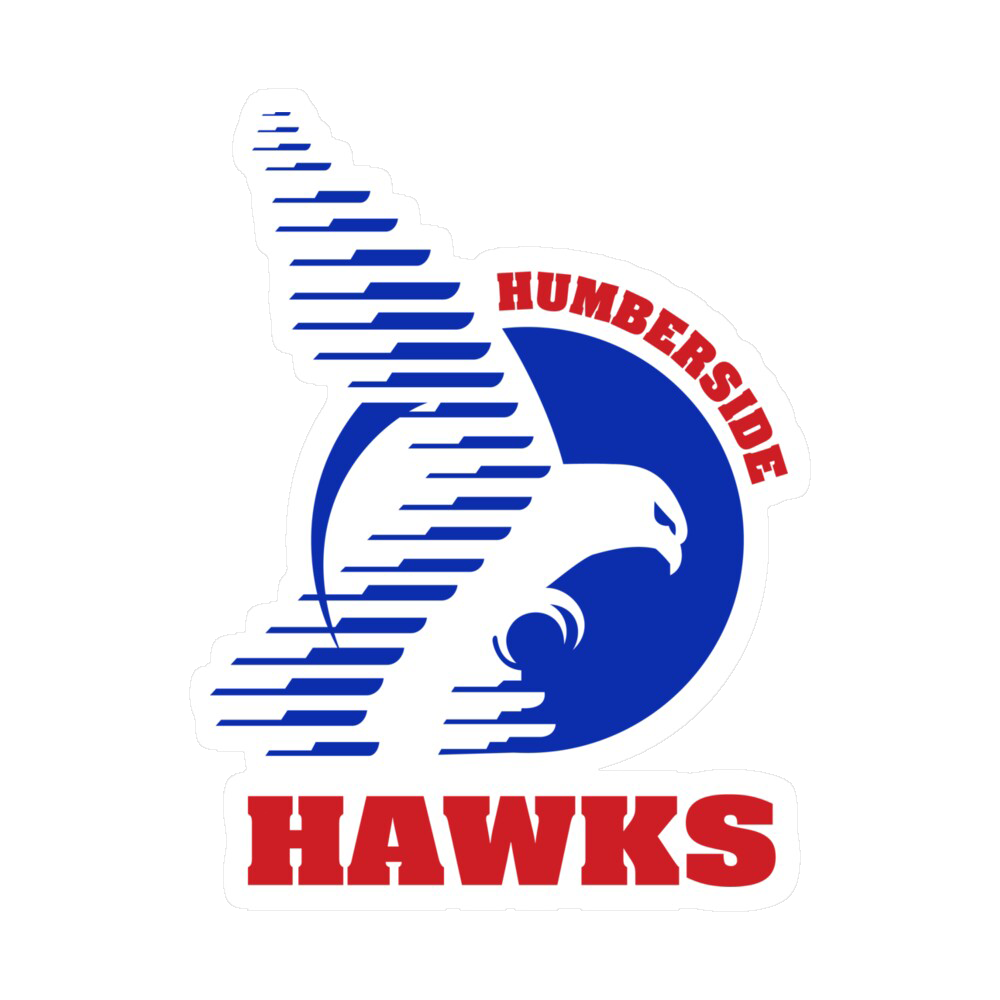
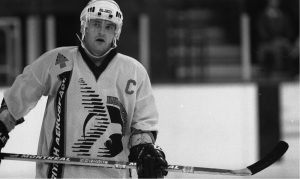
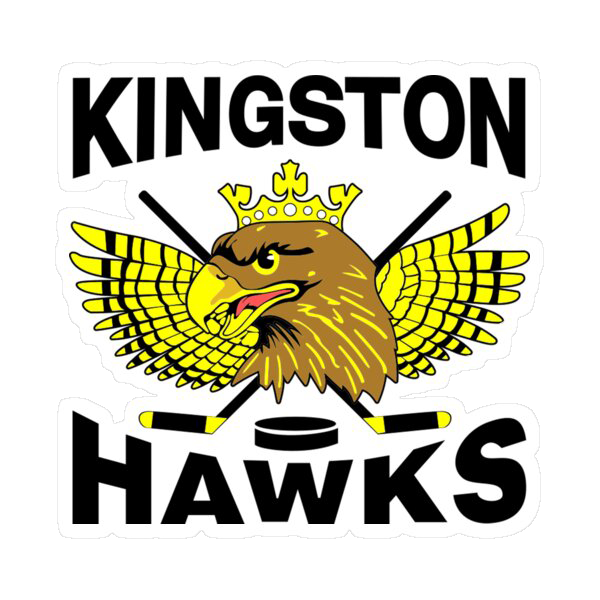


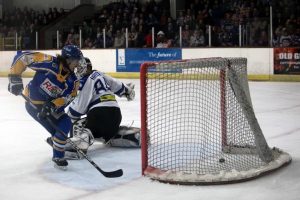
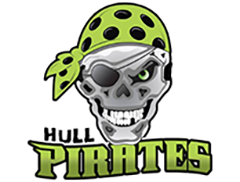
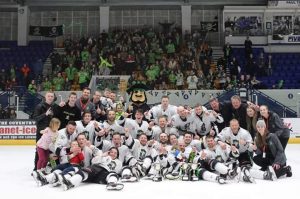 Only weeks remained before the start of the 2015 when Shane Smith, former owner of the Sheffield Steeldogs, acquired the rights to ice a team in Hull. His club entered the EPIHL, coached by former Stingray, Dominic Osman. It was a tall order to recruit a team at such short notice but Osman, who returned midway through his honeymoon to take the reins, achieved his goal to survive the campaign, albeit finishing in 9th position.
Only weeks remained before the start of the 2015 when Shane Smith, former owner of the Sheffield Steeldogs, acquired the rights to ice a team in Hull. His club entered the EPIHL, coached by former Stingray, Dominic Osman. It was a tall order to recruit a team at such short notice but Osman, who returned midway through his honeymoon to take the reins, achieved his goal to survive the campaign, albeit finishing in 9th position.